Historic Center of Kraków
The Medieval urban layout of the Old Town has not changed for centuries. Every visitor to Cracow should see Europe’s largest Medieval market square with its Cloth Hall, the Church of the Holy Mary with its Gothic pentaptych altarpiece carved from limewood, Wawel Hill and its royal castle and the Wawel cathedral with its outstanding Renaissance chapel, the Medieval university building of Collegium Maius with its unique collection of astronomical instruments, the Barbican, and St Florian’s Gate. The Jewish quarter of Kazimierz features a wealth of Jewish heritage with its 16th century cemetery and seven synagogues of which one is now the Jewish museum. Each summer the Jewish Culture Festival is held and attracts Jewish culture lovers from the whole world. Other cultural events held in Cracow each year attract thousands of visitors. In the suburban town of Tyniec stands a Benedictine Abbey dating back to the 11th century.
This historic city with old walls and numerous museums used to be a royal residence and a center of civilization spreading culture all over Poland. Here is the Wawel – the seat of Polish kings and the place of their coronations; St Mary’s Church with its famous alter by Veit Stoss; the Main Market Square – the largest medieval town square in Europe; Kazimierz – a unique district of Kraków that used to be a separate Jewish town; and the Jagiellonian University – the oldest Poland’s college with its famous Collegium Maius.
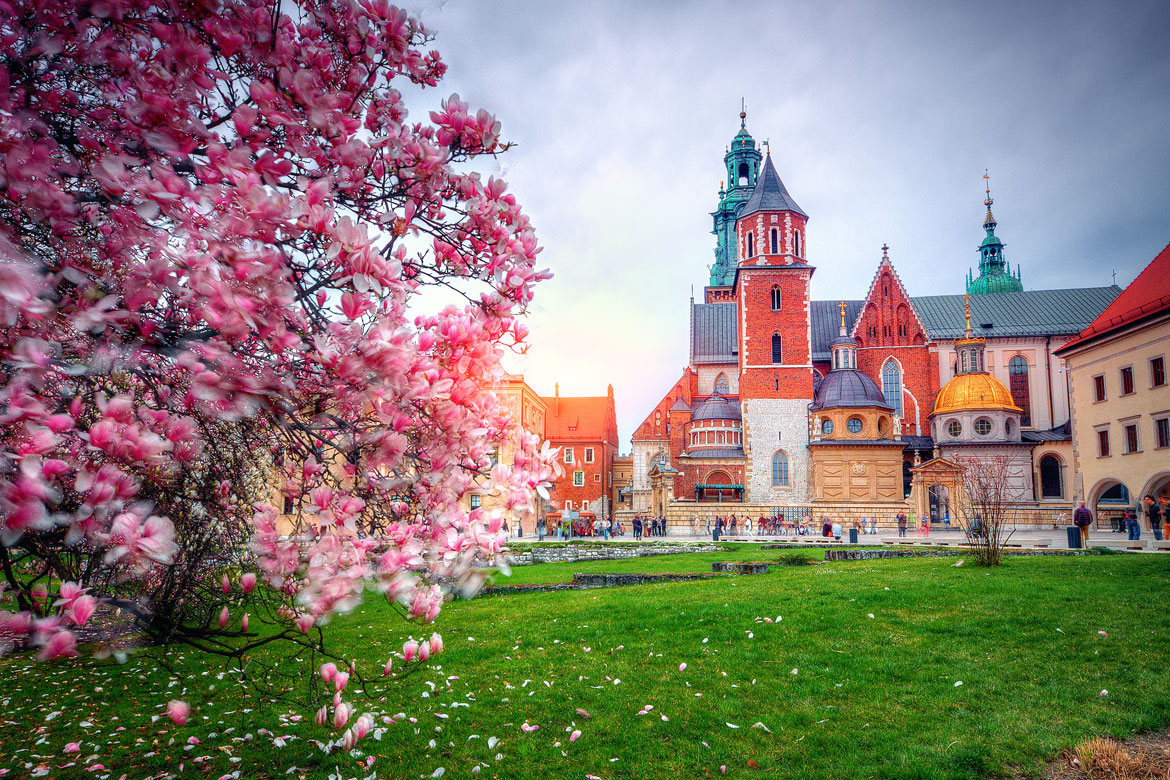
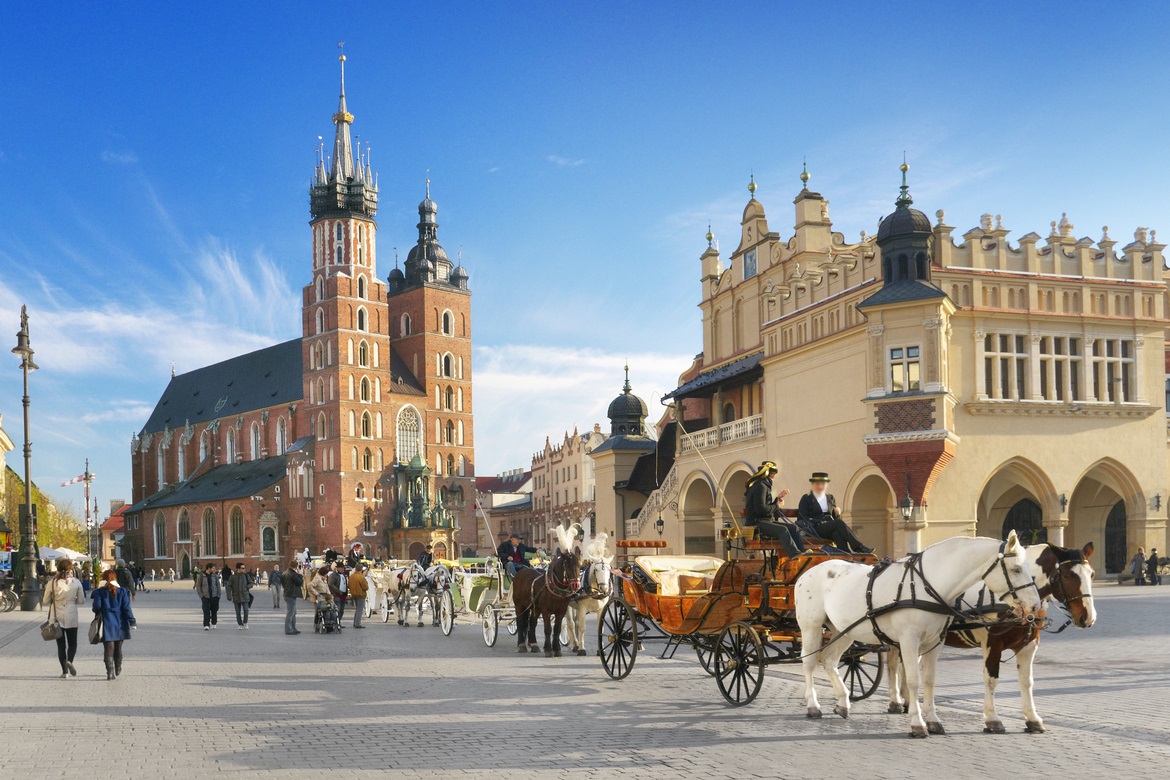
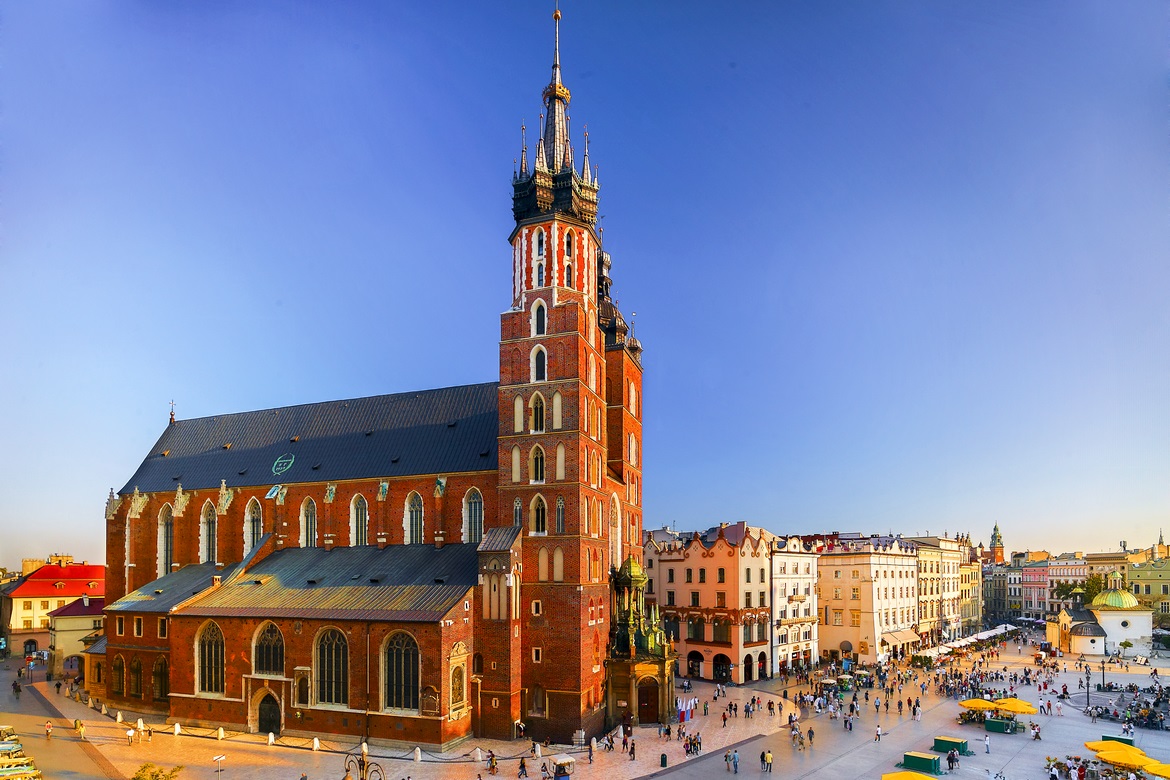
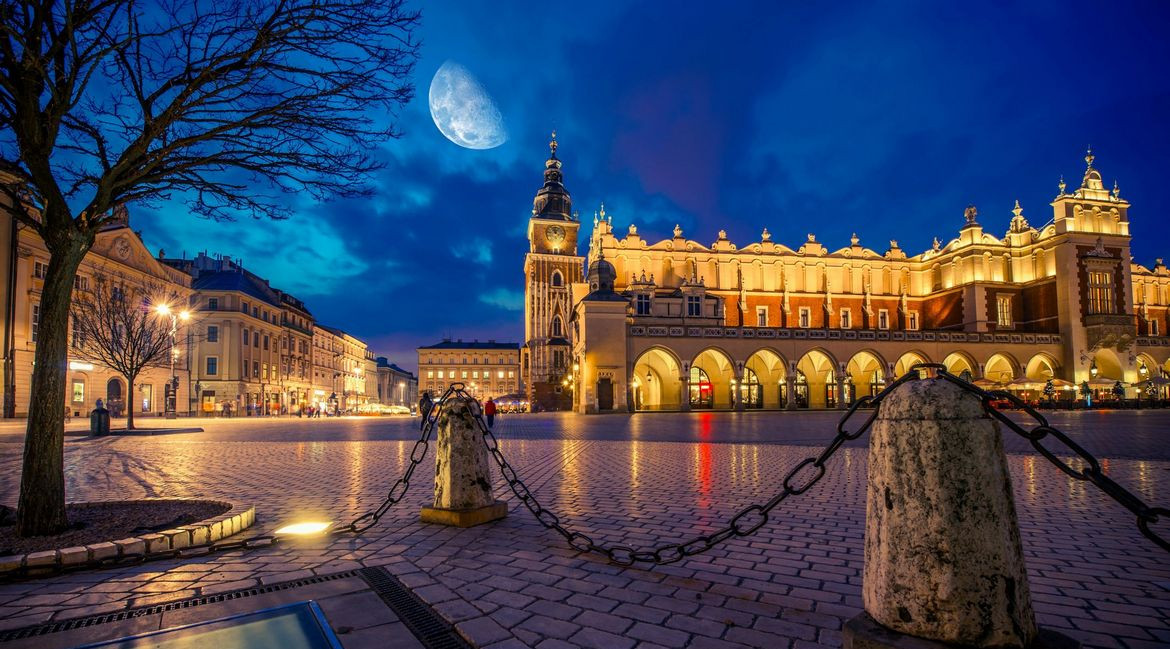
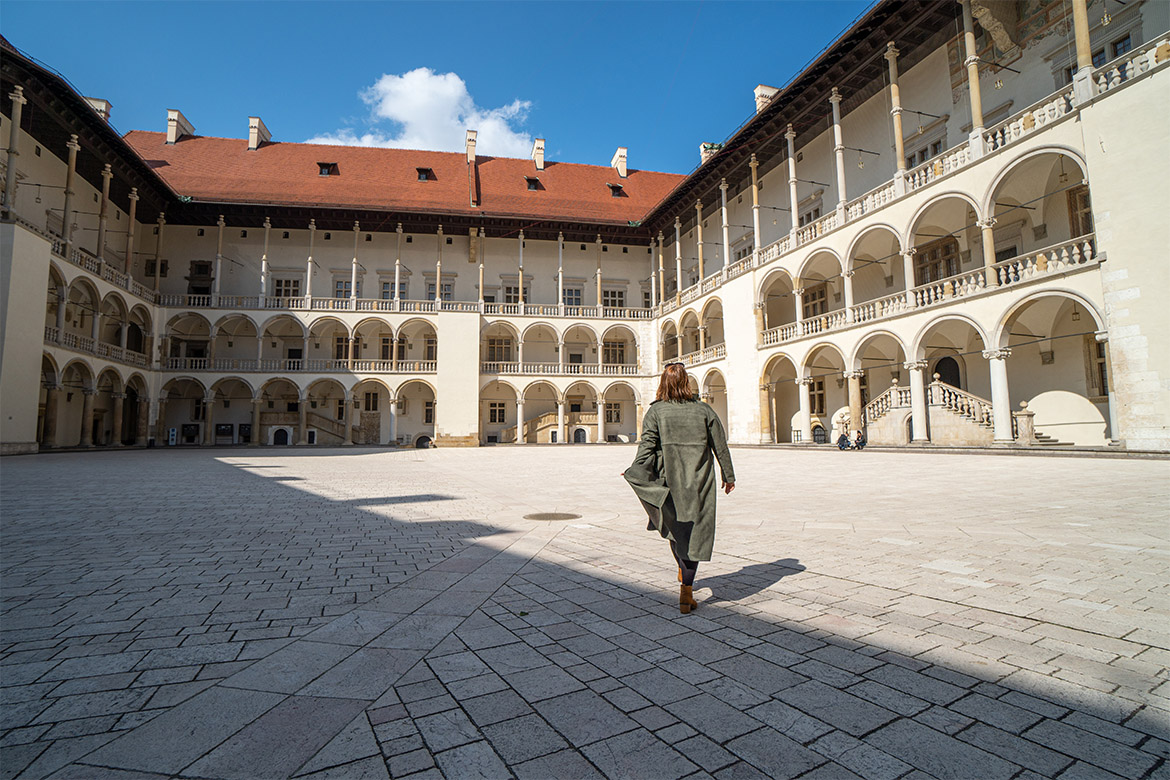
The Old Town of Kraków has preserved its medieval urban layout. It used to be surrounded by defensive walls that were later replaced by the Planty, a curiously shaped park. Of the old fortifications only a fragment with the Florian Gate, a few towers and the Barbican have remained. The Main Market Square (10 acres) plays a role of Kraków’s salon. It’s embellished by the Cloth Hall, St Mary’s Church, a tiny St Adalbert’s Church, the Town Hall Tower and many old houses, each with its own historical genealogy.
Almost all sites and buildings that create the unique ambience of Kraków can be found in the streets leading out from the Market Square or located in its closest vicinity: churches, monasteries and convents, palaces, old burgher houses and university buildings. Many museums with valuable collections are also located near the Main Market Square. Thirty-six Kraków’s museums house over two million objets d’art, i.e. ¼ of all Poland’s museum possessions.
The Wawel is a special place for Poland’s statehood – it’s been always a symbol of our country’s glorious past and of the power of former Commonwealth. Very attractive is the Royal Castle that acquired its Renaissance shape in the early 16th century. It shelters precious art collections that include 138 Renaissance tapestries manufactured by weavers of Brussels.
A few million tourists who not only admire the city and its historical monuments but also take part in numerous
cultural events of international standing visit Kraków every year. They also avail themselves of the services offered
by the multitude of top-class hotels, stylish restaurants, cafés and pubs.

